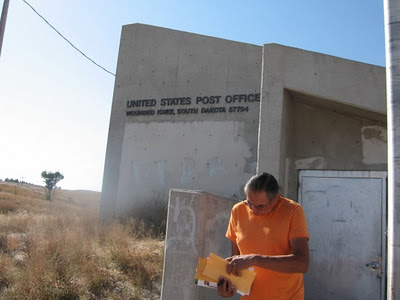A peek inside the Church's drawers: South Dakota sex abuse scandal
Published on the Huffington Post in 2011. This article was part of a project funded by the George Polk Center for Investigative Reporting. For more on topics like this, see my book, American Apartheid: The Native American Struggle.... T he letters are casual, even chatty, from officials of St. Francis Mission, on the Rosebud Sioux Reservation, in South Dakota, to Catholic Church superiors. The mission ran one of many boarding schools to which Native American parents were required to send their children from the late 1800s until the 1970s, when most of the institutions were closed down or transferred to tribal control. “All goes along quietly out here,” one priest wrote in 1968 (letter shown at left), with “good religious and lay faculty” at the mission. There are troublesome staffers, though, including “ Chappy, ” who is “ fooling around with little girls—he had them down the basement of our building in the dark, where we found a pair of panties to


